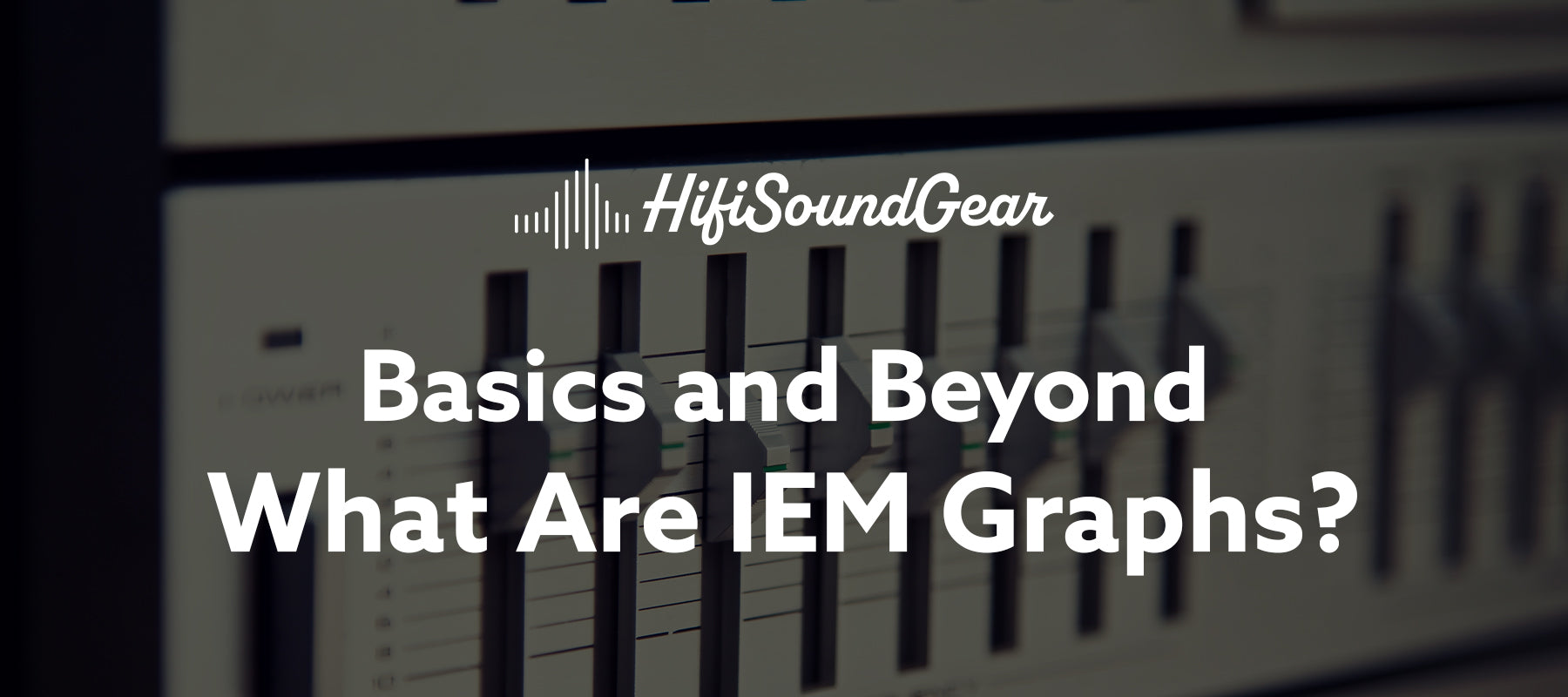
What Are IEM Graphs?
Ever stared at those squiggly lines on an IEM graph and felt like you were trying to decode ancient hieroglyphics? You're not alone! Frequency response graphs are the secret language of audio enthusiasts, and today, we're going to make you fluent in it.
What is an IEM Frequency Response Graph?

At its core, an IEM frequency response graph is a visual representation of how your in-ear monitors handle different sound frequencies. Think of it as your IEM's fingerprint - unique and telling. The graph shows two key elements:
- The X-axis represents frequency (measured in Hz), ranging from deep bass (20Hz) to airy highs (20kHz)
- The Y-axis shows amplitude (measured in dB), indicating how loud each frequency is played back
When you see these measurements, they're typically captured using specialized equipment called IEC711 couplers - think of them as artificial ears that measure sound with incredible precision.
However, it's worth noting that different measurement systems might show slightly varying results for the same IEM, much like how different cameras might capture slightly different tones of the same sunset.
Breaking Down the Frequency Ranges
Understanding frequency ranges is like learning the neighborhoods of a city. Each area has its own character and contribution to the overall experience:
Sub-bass (20-60Hz) This is where you feel more than hear. It's the rumble in electronic music and the lowest notes of a pipe organ. A strong showing here means powerful, physical bass impact.
Mid-bass (60-200Hz) The foundation of rhythm sections lives here. This range gives music its sense of warmth and body. Too much, and things get muddy; too little, and the music feels thin.
Lower-mids (200-500Hz) Male vocals and the body of most instruments reside in this range. It's crucial for giving music its fundamental warmth and fullness. A dip here can make things sound hollow.
Upper-mids (500Hz-2kHz) This is where female vocals shine and instruments show their true character. It's the "presence" region that brings sounds forward in the mix. A peak here can make things intense; a dip can make everything feel distant.
Lower-treble (2-6kHz) Detail lovers, this is your region! This range is responsible for clarity and definition. It's also where potential harshness can creep in if not properly tuned.
Upper-treble (6-20kHz) The "air" frequencies that give music its sense of space and sparkle. A good extension here provides that sense of openness and shimmer in cymbals and high-hats.
Common Target Curves Explained

Not all "good" frequency responses look the same. Several widely-recognized target curves exist:
The Harman Target Created through extensive research at Harman International, this curve represents what many listeners prefer in blind tests. It features a notable bass boost and a specific upper-midrange emphasis that many find natural.
IEF Neutral Target A more recent development, this target aims for perceived neutrality. It typically shows less bass boost than Harman and a different approach to upper mids.
Diffuse Field The old-school reference, based on how we perceive sound in a perfectly diffused field. While less popular now, it's still an important reference point.
Reading IEM Graphs Like a Pro

Now for the practical stuff! Here's how to extract meaningful information from these graphs:
Look for Dramatic Changes: Sudden peaks or dips often correlate with noticeable sonic characteristics:
- A peak around 3kHz might indicate potential harshness
- A dip around 1-2kHz can make vocals sound recessed
- A gradual rise in the bass indicates warmth without muddiness
Check Channel Matching: Good IEMs should show nearly identical responses between left and right channels. Significant differences can indicate quality control issues.
Compare with Reference Points: When comparing IEMs, look at relative differences rather than absolute values. A 5dB difference in the treble is much more noticeable than in the bass.
Beyond Frequency Response
While frequency response tells us a lot, it's not the whole story. Other important measurements include:
- Impedance: Affects how the IEM plays with different sources
- Distortion: Shows how cleanly the IEM reproduces sound
- Decay: Indicates how quickly the driver stops moving after the signal ends
Making Practical Use of This Knowledge
Here's how to apply this understanding:
- If you enjoy bass-heavy music: Look for a gentle elevation below 100Hz without a significant bump in the mid-bass (which can cause muddiness).
- For vocal lovers: Pay attention to the 2-4kHz region. A moderate elevation here usually indicates good vocal presence.
- For detail enthusiasts: Look for a well-extended treble response without aggressive peaks in the 6-8kHz region.
Remember: Graphs are tools, not rules. While they're incredibly useful for understanding an IEM's technical performance, your personal preferences and listening experience should always be the final judge.
Conclusion
Understanding IEM graphs opens up a whole new dimension in your audio journey. They're powerful tools that can help you make informed decisions and better understand why you prefer certain sound signatures over others. But remember - trust your ears first, and use graphs as a guide rather than gospel.
Ready to put this knowledge into practice? Start comparing graphs of IEMs you know and love. You might be surprised at how your preferences align with certain patterns in these measurements. Happy listening, and may your newfound graph-reading skills lead you to your next perfect pair of IEMs!
Elevate Your Listening Experience With These Related Articles
Enjoyed this article? Feel free to check out these related topics!

